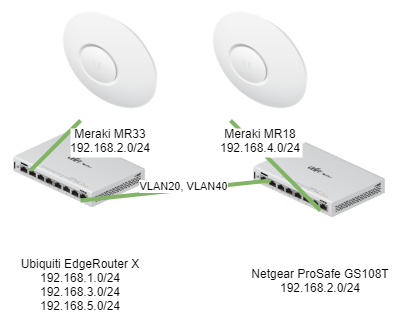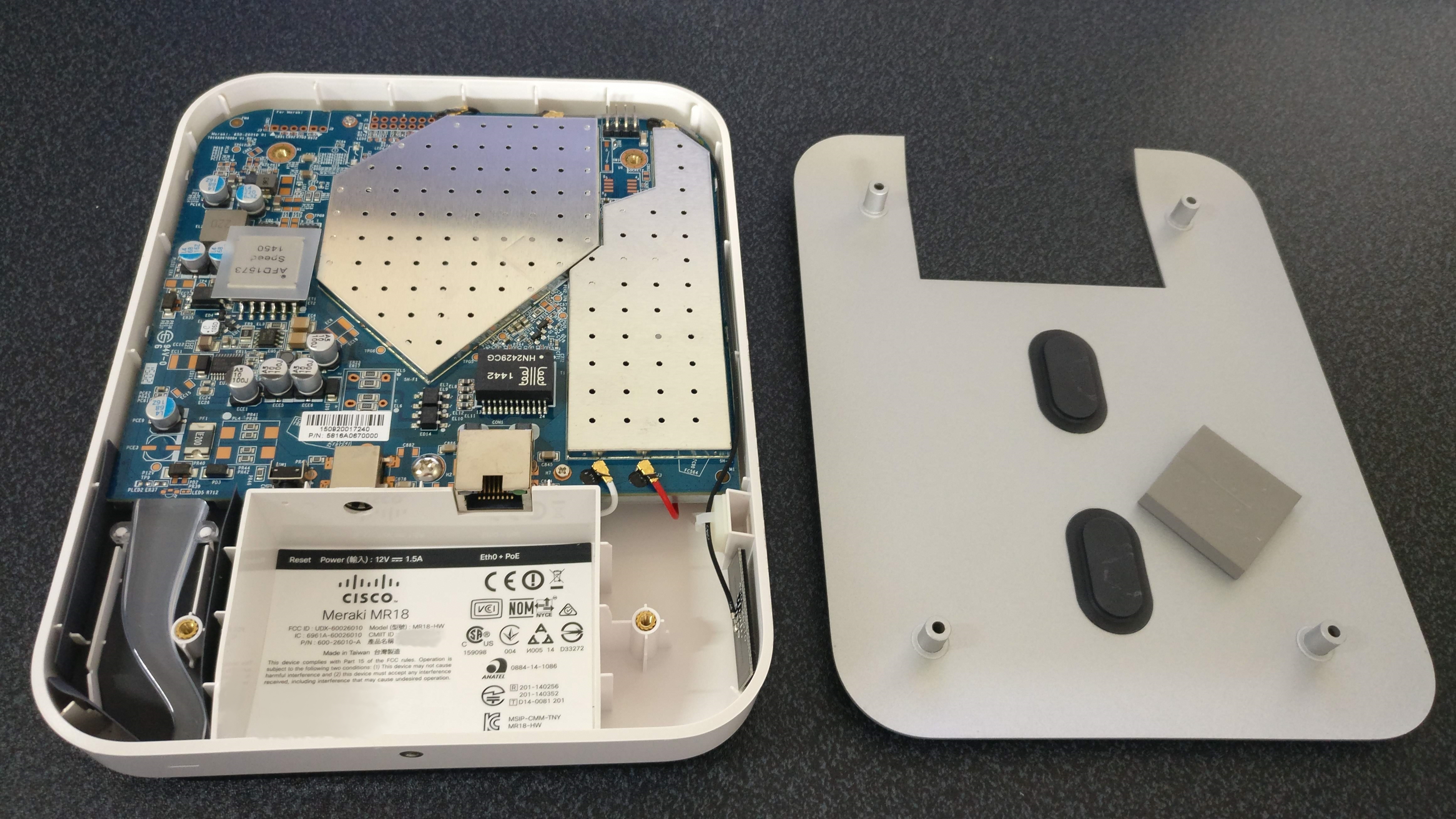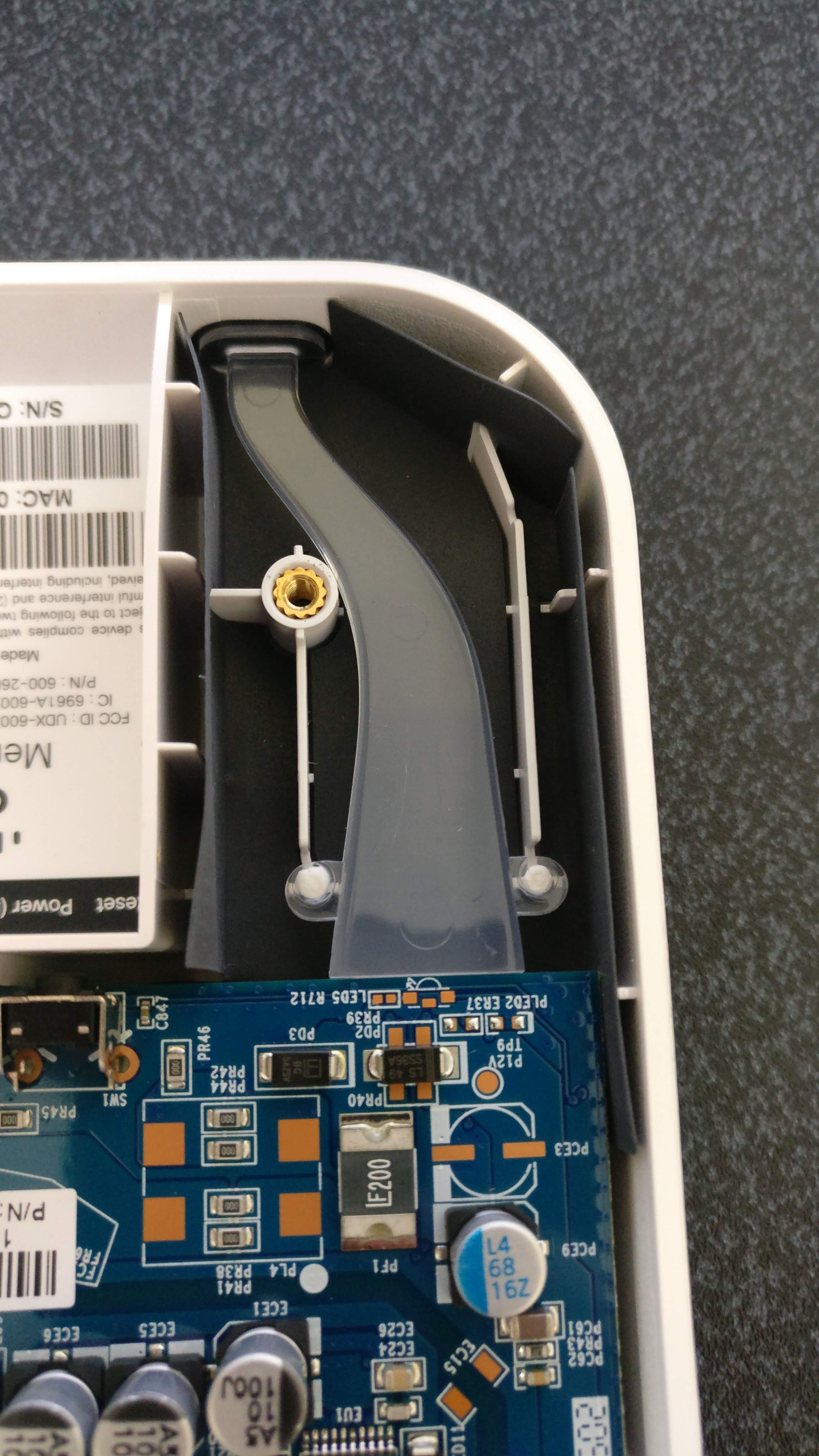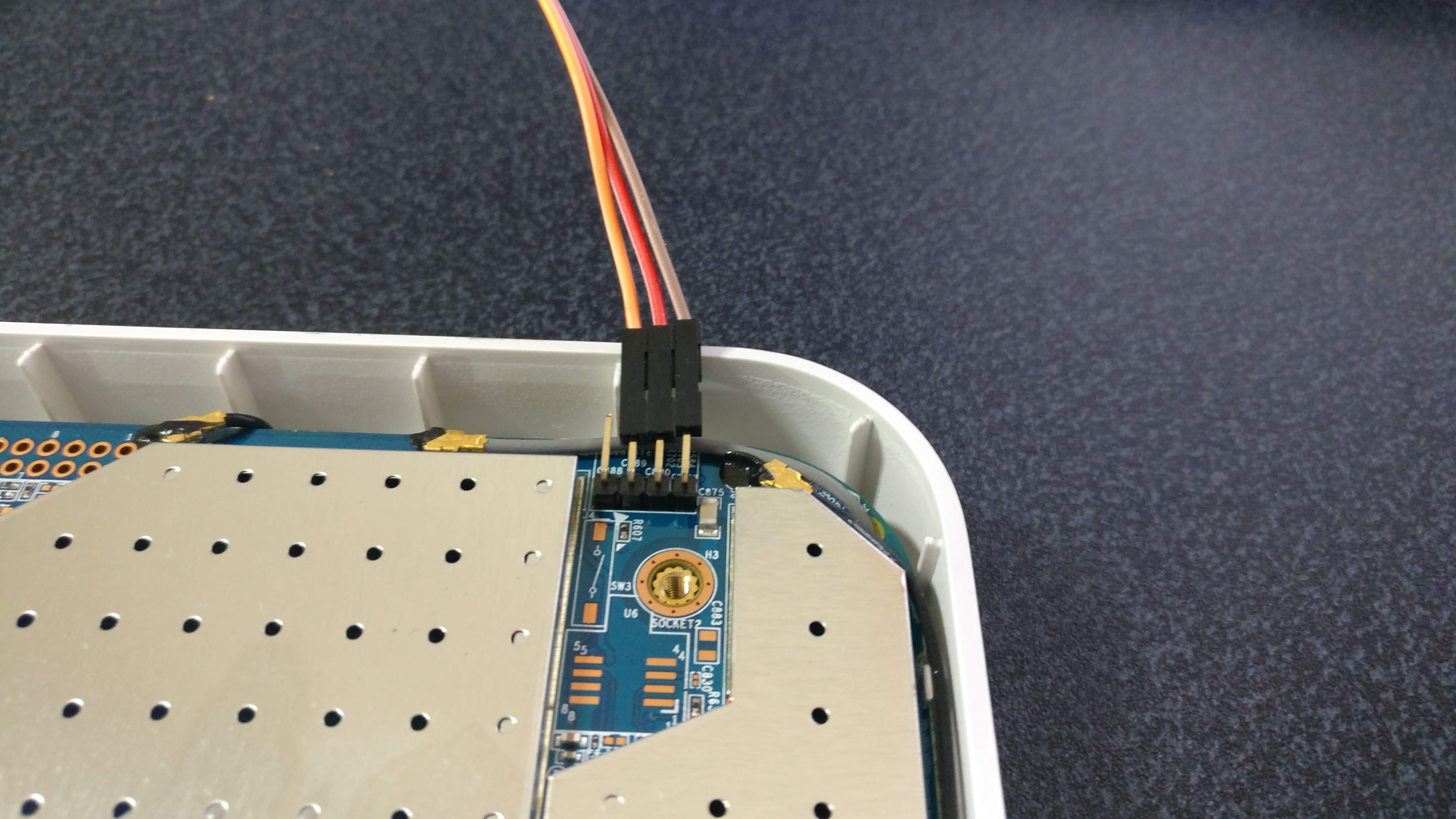Hello again, this is the second in a series of my home network posts. In this edition, we’re going to be flashing another router with OpenWrt. You can read part one here.
I decided it was time to leave all the old hardware behind and move to brand new stuff. I was having problems with the ZYXEL VMG8924-B10A as the main router, it kept cutting out and was causing short minute outages that ultimately I think was due to the system running out of ram and botnets trying to break into the thing. So I decided it was time to jump ship and move to something a little bit more enterprise. At the same time, I decided now would also be a good time to leave the Netgear WNR3500L V2 to one side. Despite it serving us good for many years, its routing features won’t be necessary for the upgrade as I want to have a good crack at managed switching.
The new network
The new network is composed with the following,
- A Ubiquiti EdgeRouter X
- A Netgear ProSafe GS108T
- A new to me MR33
I wanted to do away with having two routers on the network, it wasn’t neccisary and caused some of the upstairs equipment to be inaccessible from downstairs, the new configuration would mean that all management would be done through the EdgeRouter X which would be much cleaner and hopefully faster.
The ProSafe GS108T was a garage find, I wasn’t using it for anything and I hadn’t really implemented proper VLAN tagging before so I thought now was a better time than ever to get into it.

I also received a new to me MR33 complete with Meraki OS. Unfortunately their licencing of their hardware is not something that aligns with my principals on hardware so before we accept any software agreements I thought it best to do as always and flash OpenWRT to the thing and say goodbye to Meraki. Flashing OpenWRT onto it was no easy feat but I made sure the thing never saw access to the internet and eventually I was in.
[aidan@aidan-ld mr33]$ ssh [email protected]
BusyBox v1.28.3 () built-in shell (ash)
_______ ________ __
| |.-----.-----.-----.| | | |.----.| |_
| - || _ | -__| || | | || _|| _|
|_______|| __|_____|__|__||________||__| |____|
|__| W I R E L E S S F R E E D O M
-----------------------------------------------------
OpenWrt 18.06.1, r7258-5eb055306f
-----------------------------------------------------
=== WARNING! =====================================
There is no root password defined on this device!
Use the "passwd" command to set up a new password
in order to prevent unauthorized SSH logins.
--------------------------------------------------
root@OpenWrt:~#
root@OpenWrt:~# exit
Connection to 192.168.1.1 closed.
[aidan@aidan-ld mr33]$ A couple of configuration changes later and we’ve got a dumb ap ready for deployment.
I really wanted to play with subnets this time, before we had two but this time I thought go hard or go home, so in total there are five subnets on my home network now, that’s enough IP space on the 192 network for 1200 devices. I’ve refrained from using the 10.0.0.0/16 network class simply because I use some VPNs with the same IP space so I thought best to just keep it simple. I have to say the Ubiquiti EdgeRouter X was a little bit new to me but I like the interface, PoE was a particularly nice touch.
For the Netgear switch the plan is to take a trunked VLAN ethernet cable and have the VLAN20 on the first 7 ports and leave the remaining 8th port for the MR18. Setting it up was quite easy using the online wizard however the visualisation thingy was clearly older than useful because it seemed to use some java applet that chrome did not like.
A Little Conclusion
I like what I’ve got set up now and will probably leave it for some time. The ZYXEL VMG8924-B10A is destined for the bin but the Netgear WNR3500L V2 I’ll keep for now, it can do VLANs and probably would have worked fine, I just wanted to use a managed switch.
The new network is great. I have a printer which its driver doesn’t seem to like cross-lan communication because every time I print something, it prints fine but the software client continually reports that the communication with the printer failed. I put that down to poor software testing I guess. Wouldn’t be the first time someone had printer woes.

| Subnet | Purpose |
| 192.168.1.0/24 | Downstairs Wired (eth1) |
| 192.168.2.0/24 | Upstairs Wired (eth2.20) |
| 192.168.3.0/24 | Downstairs Wireless AP Clients (eth3) |
| 192.168.4.0/24 | Upstairs Wireless AP Clients (eth2.40) |
| 192.168.5.0/24 | 4th port on router, only a printer attached.(eth4) |
Thats all folks. Aidan.




